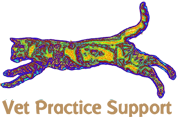- Home
- Information for owners concerning risks associated with procedures
Information for owners concerning risks associated with procedures
Downloadable version here: VPS advice for pet owners regarding risks
Advice for pet owners regarding risk associated with common diagnostic and therapeutic procedures
Updated Sept 2022
Rest assured that our worst nightmare is something bad happening to your pet. This is the stuff that keeps us awake at night. Having said that, it’s just a fact of life that when they’re poorly something has to be done and almost any medical procedure involves risk of some kind. This is an attempt to outline some of the basics: please just ask for specific information which we will be happy to discuss.
Ultrasonography
The good news is that ultrasound examinations are very safe and generally painless! Occasionally, very nervous pets might need sedation or even general anaesthesia to allow a stress-free process. Sedation or anaesthesia always involves some risk: in extreme cases even risk of death.
Clipping of fur
Clipping helps us get a good picture of what’s going on inside. Clipping a wriggly pet can sometimes be surprisingly challenging and it’s not uncommon to get a bit of a rash afterwards or small grazes on awkward angles. Happily, this kind of thing usually settles down promptly without treatment. If your pet starts to chew or scratch repeatedly at the affected area then please seek veterinary attention without delay. Hair usually regrows in a few weeks. Rarely, delayed re-growth or permanent baldness may occur: usually associated with certain medical conditions or specific breeds.
Fine Needle Aspirates
Fine needle aspirates (FNAs) are biopsies taken by inserting a thin needle through the skin (often with ultrasound-guidance) to collect cells for examination by a pathologist. Sedation or anaesthesia is often needed to facilitate this.
Although all biopsy procedures involve some risk, the advantage of FNA samples is the relatively low chance of complications such as pain, bleeding, infection or bruising.
The disadvantage of this sample is the lower chance of getting a definite diagnosis since fewer cells are collected and their arrangement in the body cannot be assessed.
Core Biopsies
Core biopsy devices collect a larger (but still very small in real terms; about 1.5mm diameter) sample of tissue for analysis. Generally, an anaesthetic is needed to collect these samples. However, as with FNAs these biopsies are taken with a needle inserted through the skin without the need for full surgery.
The advantages over FNAs is that a tissue sample is collected which will contain many cells and allow the arrangement of cells within the tissue to be assessed. Thus, the chances of a definite and accurate diagnosis are increased: though still never guaranteed.
The main disadvantage of core biopsies is the increased risk of bleeding. Occasional patients will need surgery and/or transfusion to resolve bleeding and there is a small risk of death. We can discuss this with you in more detail: the degree of risk varies considerably depending on circumstances.
Chest/Pericardial sampling and drainage
Risks include: bleeding, infection and pneumothorax (collapsed lung) and, in the case of pericardial drainage, irregular heart rhythm. Some of these patients with heart or lung disease are in a very delicate situation and present a significant risk for any intervention. Fatal complications are possible.
Abdominal fluid sampling (abdominocentesis):
Generally, very safe: small risk of bleeding or leakage of gut content which can be very serious and potentially-fatal.
Urine sampling from the bladder by needle (cystocentesis):
Generally, very safe: small risk of bleeding or leakage of urine which can be very serious.
Bronchoscopy
Complications such as airway rupture or bleeding are rare.
Gastroscopy or Colonoscopy
These are generally low-risk procedures. Rare complications include bleeding and intestinal rupture. These can be very serious and potentially fatal.
General Anaesthetic/Sedation
Please discuss these with your veterinary surgeon: specific details of the patient’s condition, procedures and other circumstances will influence the degree of risk.
Generally-speaking all sedatives and/or general anaesthetics carry a very small chance of complications up to and including death. Risks must be weighed against likely benefits on a case by case basis.
Most Popular Articles
Categories
- Another Category (1)
- cardiology (55)
- dermatology (16)
- Internal medicine (228)
- ultrasonography (209)
- Uncategorized (134)





